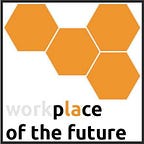Speaker Series: Zappos
In this Speaker Series, we feature Alexis Gonzales-Black from the Holacracy Implementation Team at Zappos, who helps to dymystify the real-world application of Holacracy as a governance structure for businesses.
For more information on Holacracy at Zappos, visit: http://www.zapposinsights.com/about/holacracy
Q1:
Can you help us define Holacracy and what it means to Zappos?
A1:
In simple terms, Holacracy is a self organizing process, so rather than the rigid hierarchical pyramid governance structure that most companies are familiar with, Holacracy organizes around the work instead of the people. For instance, in the conventional hierarchical structure, only the manager of the team has the authority to assign roles and responsibilities, whereas in Holacracy, it allows for that authority to be distributed which leads to each individual feeling empowered to change the roles and accountability within their circles (otherwise referred to as teams).
Q2:
Why did Zappos decide to migrate to Holacracy?
A2:
The best explanation is the statistic that our CEO, Tony Hsieh shares which is that studies show that as the population of a city doubles, the productivity per resident increases by 15 percent so cities have a positive impact on productivity and creativity but the opposite tends to be true with companies. As companies grow, due to communication silos, bureaucracy, individuals often time become less productive over time. With that said, Holacracy was a way for Zappos to operate more like a city to be self organized and distribute power to allow the company to continue to grow and thrive.
Q3:
What is your role in the Holacracy Implementation Team at Zappos?
A3:
My role is to roll-out Holacracy to the entire company (we are currently at 75% of the anticipated 400 circles that will be formed) and my day-to-day consists of coaching and facilitating to ensure that everyone has the support that they need, but I also hold roles in other circles around the company.
Q4:
How has Holacracy changed the culture at Zappos?
A4:
We have a unique and dynamic culture and Holacracy is not going to change that culture. If anything, Holacracy is used to re-energize our culture which is manifested by our ten (10) core values. To embrace and drive change (one of the core values) and we see Holacracy as an opportunity for every person at Zappos to step up and embrace change to be on the cutting edge. Another core value is to build meaningful relationships with open and honest communication and in Holacracy meetings, there are new levels of transparency.
Q5:
Do you get complaints with the time needed to transition to Holacracy?
A5:
It is definitely a time intensive process but the challenges that come up is not about the time but the complexity of understanding the process. In the Holacracy Constitution, there are many rules but in addition to that, there is a behavioral and mental shift that needs to occur for the implementation.
Q6:
Has Zappos adopted the Holacracy Constitution?
A6:
Yes, our CEO has ratified the Holacracy Constitution including and the legal team is operating under Holacracy as well. We fully intend on adopting Holacracy into all of our systems, including with compensation and progression and hiring/firing process.
Q7:
In Holacracy, organizations have a partnership-based structure, rather than employees. Is Zappos structured that way as well?
A7:
As we transition all of our work into the Holacratic system, it is modeled around every person being a partner and by that we mean, each individual feeling empowered and accountable for their own work. We are currently looking at new ways to increase that partnership even further, including compensation models and progression models.
Q8:
Do people have titles?
A8:
We’ve established a system where we use “hashtag titles”. Internally, we don’t use titles and it’s because in Holacracy, individuals play multiple roles across the company (for example, I currently sit in 6 circles with 14 roles across the company) so titles at Zappos can’t accurately capture your role on a day-to-day basis. We do recognize the need for them so we use the “hashtag titles” as the titles to include in our HR information database and as the title that can be used externally.
Q9:
How does Holacracy impact salary and benefits?
A9:
We’re currently working through what Holacracy means for salary and benefits and we’re working with a few models at the moment. Ideas of where we’re headed right now (although it’s very likely that this changes), is by using the “hashtag titles” as the basis for determining salary but with taking into consideration of the additional roles and responsibilities that people may be taking on by using a 80 / 20 rule (where if 80% of your work role changes), we update your “hashtag title” at the company which then will reflect in one’s compensation.
Q10:
Are you using the Glassfrog software to operate on a day-to-day basis?
A10:
Yes we are. Glassfrog is a software tool that Holacracy.org provides and anyone is able to log in at any time and you’re able to see everyone’s roles and accountability. So for instance, if you want to know what someone’s role is in a circle, you can see up to real-time on what that may be.
Q11:
What are the steps that companies go through to operate with Holacracy?
A11:
Step 1) Have the leader of the company sign the Holacracy Constitution, Step 2) Provide education and support; most people learn experientially but they require constant support and at Zappos we provide constant training via Holacracy 101 courses or three day intense practitioner training courses.
Q12:
How has Holacracy impacted the day-to-day at Zappos.
A12:
Not very much. Each day looks like any other day with the exception of how decisions are being made and how we operate our meetings. With the new model of conducting meetings, the change has been that each voice is heard at meetings.
For more information about Holacracy, visit: http://holacracy.org/
